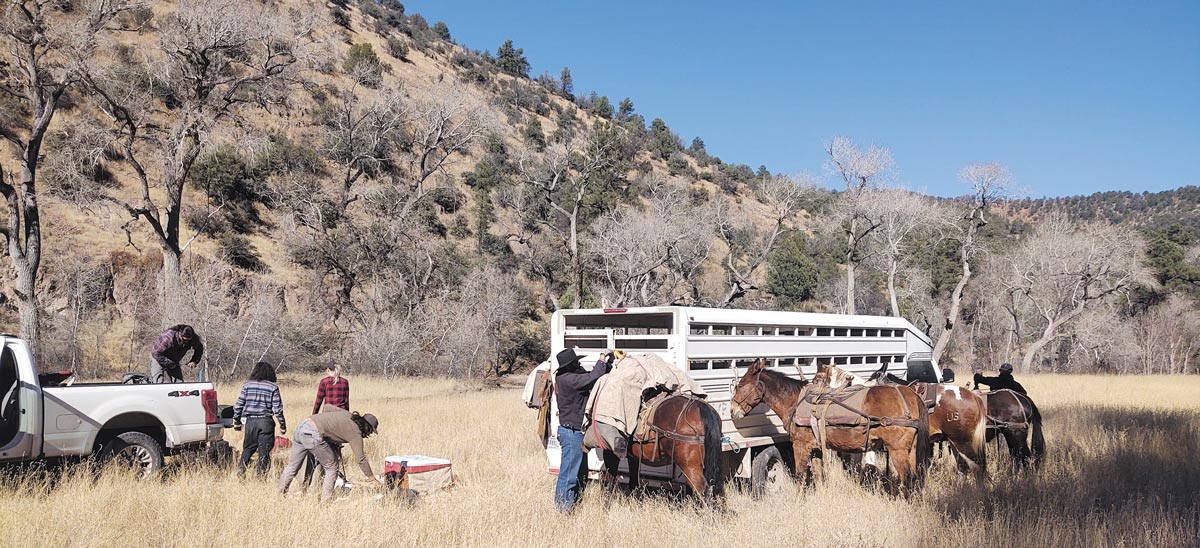

Photo: Dan Taylor
Healing the Land
The human-caused Black Fire was the second-largest wildfire in New Mexico history. It burned so hot that it stripped vegetation off the landscape. A severe monsoon season followed and exacerbated the problem.
“The watershed couldn’t assimilate that amount of water anymore because the forest wasn’t there, which eliminated a lot of good habitat for bats, fish, and other wildlife,” says Bat Conservation International (BCI) Restoration Team Lead John Moeny.
BCI’s Habitat Protection and Restoration Program has intensified its efforts to safeguard and restore bat habitat in these areas, supported by a five-year agreement with the Gila National Forest. These projects include reseeding the burned landscape and restoring watersheds.
Motorized equipment is forbidden in the remote project site due to its status as designated Wilderness, so BCI is using a traditional method to access the site and transport equipment and supplies: horses and mules.
A day in the life: Habitat restoration teams
“We do what’s called process-based restoration,” Moeny says. “It essentially attempts to mimic what would have been the stream process pre-fire or pre-disturbance. So, for instance, we often mimic what beavers would have done on the landscape.”
Scientists have recently begun looking into the relationship between beavers and bats. Beavers’ dams create pooled bodies of water that provide vital sources of drinking water for bats. They also help raise the water table, which greatly benefits riparian vegetation, which is the most important bat foraging habitat in the southwest.
After eight to 10 hours of work, the team returns to camp. Despite the challenging work, Moeny says the project is incredibly rewarding. “It’s feel-good work for sure. We see the tangible benefits of our work,” Moeny says.
Those benefits include noticeable regrowth of willows and new pooled areas providing habitat for beavers, bats, fish, and other wildlife. Moeny says this will benefit an entire ecosystem.
“We’re doing it for bats, but it’s a holistic idea that if you do a project that is good for bats, it’s going to bring a lot of benefits for other organisms, wildlife, water quality, and the overall watershed condition,” Moeny says.